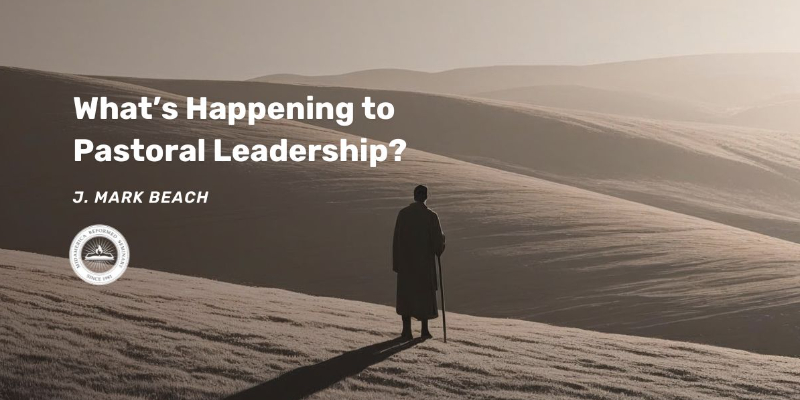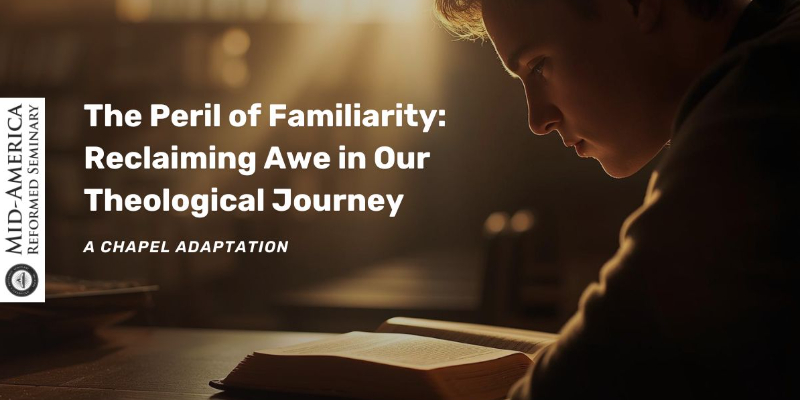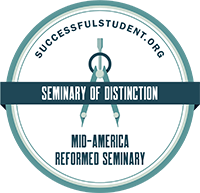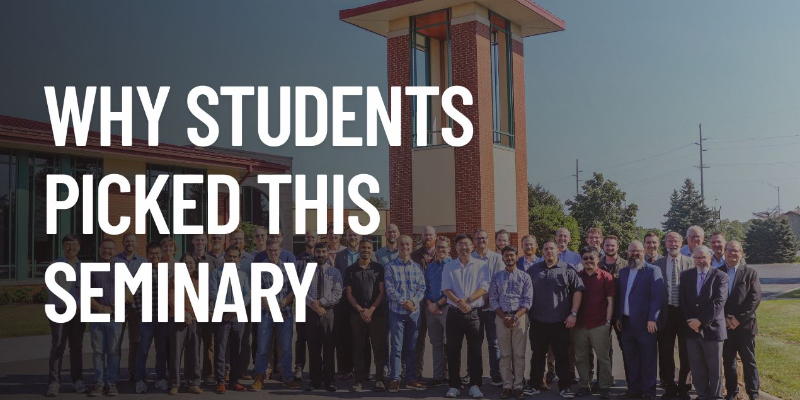
Then & Now: Reflections on My Service at Mid-America Reformed Seminary
When the editorial committee for The Messenger met recently to plan this issue, I was asked to write an article that offers reflections on my thirty-six years at Mid-America Reformed Seminary. I happily agreed to the request because it affords me an opportunity to express my heartfelt gratitude for the privilege of preparing our students for the pastoral ministry. As I have remarked through the years, if serving a local congregation as a pastor who preaches Christ “is the best, hardest, sweetest work on this side of beholding Him” (Archibald Alexander), then “entrusting” the gospel to “faithful men who will be able to teach others also” (2 Tim. 2:2) is a close second.
My reflections will begin with the story of how I began my work at Mid-America, and then turn to some of the challenges we have faced as an institution.
The Beginning: "Three Strikes and You're Out"
As I reflect upon how I came to teach at Mid-America in 1988, the observation of a Puritan writer about God’s providence comes to mind: We read God’s providence “back to front.” What may seem to us to have been mere happenstance at the time becomes more clearly discernable as we look back and recognize the work of God’s fatherly hand in our lives.
During my years of preparation for the ministry, first at Trinity College and Dordt College (1971-1975), and then at Calvin Seminary (1975-1978), my only vocational aspiration was to serve as a pastor in a local church. Though one of my professors at Calvin Seminary managed to convince me that I should pursue graduate study at Princeton Theological Seminary (1978-1982), I did not do so with the aim of teaching theology at a Christian college or seminary. Since I was quite young when I graduated from Calvin Seminary (24 years of age!) and was accustomed to the rigors of academic study, I thought graduate
study would provide further time to mature and prepare for the ministry.
And so I became a candidate in 1982, accepted the call of the Ontario Christian Reformed Church in Ontario, California, and served that congregation from the fall of 1982 until the summer of 1988. Perhaps my wife, Nancy, and I view those years through a nostalgic lens, but they were, for us and our children (the youngest two of four were born during this period), among the happiest and most enjoyable years of our life together. I loved the pastoral ministry and the congregation I served.
I mention this in order to explain in part my reluctance for several years to consider the call to serve as an instructor at Mid-America. Prior to the end of my studies at Princeton, I had been approached by the Faculty Development Committee (FDC) of Mid-America regarding my interest in a possible teaching position but rebuffed the overture. After serving for a few years in Ontario, I was again approached by the FDC on three separate occasions, asking me to consider an appointment to teach doctrinal studies at Mid-America (perhaps due to the persistence of one of its members, Rev. Jelle Tuininga, who refused to take “no” for an answer!). When I accepted the appointment of the Board of Trustees early in 1988, I can still remember saying to Nancy, “If I say ‘no’ this time, I believe that means ‘three strikes and you’re out.’ I had better give it a try, and if it doesn’t prove to be the task for me, I can always return to the pastoral ministry.”
Teaching at Mid-America in the Early Years
When I arrived in Orange City in the summer of 1988, Mid-America was a young institution in its sixth year of existence. The faculty consisted of four full-time professors (Rev. Mark Vander Hart, Dr. Nelson Kloosterman, Rev. Robert Grossmann, and myself). The student body was small in number. After one of our students, Roger Vander Veen, was unexpectedly called home by the Lord in the spring of 1989, my junior class was reduced to one student. In this early period, Mid-America was challenged to defend its existence in the face of controversy and strong opposition on the part of many within the Christian Reformed Church in North America (CRCNA).
From the beginning, the founders and supporters of Mid-America were very clear about the school’s mission and purpose. Several features of Mid-America’s approach to seminary training were frequently identified and are worth remembering:
1) Biblical and Confessional Fidelity
If a seminary is to serve the church’s ministry of the gospel, it must be wholeheartedly committed to the inspiration, authority, and infallibility of the Scriptures, as well as the Reformed confessions that summarize their teaching. As Charles Hodge, one of the great theologians of old Princeton, argued, teachers at a seminary must be held to the highest degree of fidelity to the church’s primary and secondary standards.
2) A Classical Curriculum
If a seminary is to serve the church’s ministry of the gospel, it must furnish its students with a classical theological education that, in all its parts, aims to provide students with the tools needed to be faithful preachers and teachers of the Word of God. If the central task of a pastor is to preach and teach the Word of God, students who aspire to the pastorate must be taught: 1) to read the Bible competently (biblical studies); 2) to become familiar with the church’s history of engagement with the Word (ecclesiastical studies); 3) to know the “system of doctrine” taught in Scripture (doctrinal studies); and 4) to minister the Word in preaching, teaching, pastoring, and discipling (ministerial studies).
3) A Pastoral and Ministerial Focus
If a seminary is to serve the church’s ministry of the gospel, it must always be mindful of the diversity of tasks that belong to the pastoral ministry. Therefore, from its inception, Mid-America insisted that its professors be ordained ministers with experience in pastoral ministry. It also established a Ministerial Apprenticeship Program (MAP) that aimed to integrate academic study with ministerial application throughout the whole course of the student’s seminary training.
While I was convinced at the time (and still am) that this was a clear and compelling approach to seminary training, I was not as convinced that Mid-America should restrict its work to serving the CRCNA. When Mid-America was founded in 1981, the founders and supporters of the school were all members of the Christian Reformed Church. Their aim was to establish a seminary that, with the Lord’s blessing, would contribute to renewal and reformation within the Christian Reformed Church. My initial reluctance to teach at Mid America was in part due to my conviction that its approach to seminary education ought to include a broader aim to serve students not only from the CRCNA but also from other confessionally Reformed churches. Already during my graduate studies, I had pressed the Search Committee on the question of the Board’s interest in providing seminary training for a wider community of Reformed and Presbyterian churches in North America. I suggested that Westminster Theological Seminary in Philadelphia might be a model for Mid-America. Just as Westminster blended its Presbyterian identity with a strong dose of Continental Reformed theology, Mid-America could blend its Reformed identity with an appreciation for the Westminster Standards.
The Move to Chicago: A Difficult But Necessary Transition
I mention the challenges Mid-America faced in the early years of its existence to provide a context for considering the Board of Trustees' decision to relocate the Seminary from Northwest Iowa (Orange City) to the Chicago area (Dyer, Indiana) in 1995. Though a Board-appointed committee was asked to explore the question of relocating the Seminary as early as 1985, the decision to do so was not an easy one to make for various reasons. It required uprooting the Seminary’s faculty, staff, and students. It also meant leaving an area where many churches and supporters had welcomed the Seminary into existence and generously supported the school in countless ways. Understandably, many of the Seminary’s friends in Northwest Iowa were disappointed with the decision to relocate.
However, the decision to relocate the Seminary occurred for several compelling reasons:
First, the ecclesiastical landscape had changed. The relocation of the Seminary coincided with the formation of a new federation, the United Reformed Churches in North America (URCNA), in the years 1995 and 1996. With the emergence of the URCNA in this period, it had become evident that Mid-America’s original purpose, which was largely focused upon renewal in the CRCNA, was too limited and unlikely to be achieved. Although Mid-America was not officially a seminary of a particular denomination, it was intimately associated with the URCNA, from which it received increasingly more of its support and a majority of its students.
Second, during the period of MidAmerica’s work in Northwest Iowa, several steps had moved the Seminary toward a broader field of service within the community of Reformed and Presbyterian churches in North America. Not long after the school was founded, the Board was approached by representatives of The Reformed Church in the United States. This contact led to the appointment of Rev. Robert Grossman to the Faculty in 1985. Interest in the Seminary was also increasingly expressed by members of the Orthodox Presbyterian Church and the Presbyterian Church in America. Recognizing the opportunity to serve these churches, the Board of Trustees revised the Seminary’s Bylaws to include the election of Board members from various Reformed and Presbyterian denominations (1990). Shortly thereafter, the Board expanded the Seminary’s confessional basis to include subscription to a fourth standard, the Westminster Confession of Faith (1993). During this period, the Board also appointed Rev. Raymond Zorn, an OPC minister who served in the Reformed Churches in New Zealand and Australia, and Dr. Joseph Hall, a minister in the PCA, to teach doctrinal and ecclesiastical studies, respectively.
Third, the choice of the Chicago area as a new location was based on the advantages it would provide the Seminary in serving a diversity of students and churches. The present location of the Seminary lies at what is often called the “crossroads of America,” a transportation hub and point of intersection between East and West. Significant portions of our constituency, from its beginning, live in the state of Michigan to the north and the province of Ontario to the northeast. Furthermore, the diversity of Reformed and Presbyterian churches in the Chicagoland area provided an encouragement to students who naturally preferred to worship and test their ministerial skills in churches of their own communion.
Serving as President in a Period of Growth and Transition
When I consider the more recent period of my time at Mid-America, I view it as a period of growth and a time of transition. The school has experienced an increase not only in the number of students but also in the size of its faculty and administrative staff. The decision to relocate the Seminary to the Chicagoland area has enabled Mid-America to prepare more students for pastoral ministry in a growing number of Reformed and Presbyterian churches in North America and beyond.
Since the Seminary relocated to the Chicagoland area, the number of students has steadily increased (from approximately 20 to 40). These students have come primarily from the URCNA and the OPC, as well as the PCA and the RCUS. However, many have also come from other denominations in North America: the CRCNA, the Reformed Church in America, the Canadian Reformed Churches, the Evangelical Presbyterian Church, Reformed Baptist, and other (some independent) churches. In addition to students from North America, we have welcomed international students from New Zealand, the United Kingdom, South Africa, Haiti, Jamaica, Nigeria, the Philippines, Sri Lanka, Myanmar (Burma), Taiwan, Mexico, India, Ecuador, Korea, China, Indonesia and Egypt. Without compromising Mid-America’s focus on training its students for pastoral ministry, the Seminary now offers a Master of Theological Studies program, which aims to prepare students theologically for service in a number of nonministerial vocations.
With an increase in the number of students, it became evident that the Seminary would need additional faculty and staff, including some changes in its administrative structure. Dr. J. Mark Beach was appointed to teach ministerial studies in 1997, two years after the move to Dyer, and Dr. Alan Strange was appointed to teach ecclesiastical studies in 1999, replacing Dr. Hall. After the Board decided that the school needed a President, I was appointed (“conscripted”) in 2001 to be the first President of the institution. In recent years, two significant administrative positions were created in the areas of student enrollment and marketing: Rev. Jeff DeBoer was appointed as the school’s first full-time student recruiter, and Jared Luttjeboer was appointed to be the Director of Marketing. Two full-time faculty members were added in New Testament (Dr. Marcus Mininger) and Old Testament (Dr. Andrew Compton) studies. The first graduate to teach full-time at the Seminary, Rev. Paul Ipema, was recently appointed to teach ministerial studies and assume the position of Director of the Ministerial Apprenticeship Program upon the retirement of Rev. Vander Hart. Last but not least, the Seminary established a Center for Missions and Evangelism (CME) and appointed Dr. Eric Watkins, a minister in the OPC, to serve as its Director and part-time faculty member in ministerial studies. Furthermore, due to the growth of the Seminary, the Board approved the first significant expansion of the Seminary’s facility: the addition of a chapel auditorium, an enlargement of the cafeteria, and provision of new office space and a conference room.
I mention these developments to illustrate how wonderfully the Lord has blessed Mid America in providing for its needs, whether in finances or in personnel, and to underscore how all of this has taken place within the framework of a steady, persistent adherence to the vision for the school that its founders first articulated.
However, the school now enters a critical moment in its history: the challenges that come with a period of transition. I am keenly aware of the fact that Mid-America will soon have a new second President and that none of the faculty members who taught at the school in the early history of the institution will be part of the full-time, active faculty. I am also aware that the continued support of Mid-America’s constituency must not be taken for granted. In spite of our close and intimate relationship with the URCNA throughout the school’s history, many members of the URCNA today have little memory of this history and are not as inclined to view Mid-America as uniquely suited to prepare their future pastors (though they should be!). We are not an institution that can “rest on its laurels” and assume that all will be well. Our service to the Lord and His church will only be as He pleases or wills. We remain as dependent today upon God’s favor as we were when the work of Mid-America began.
As I reflect upon my time at Mid-America, I am deeply grateful for the opportunity that has been given me to contribute to its ministry. Though I plan to “retire” as President and professor at the end of this academic year, I hope to continue contributing in whatever way I can to Mid-America’s ongoing work—teaching occasionally (when asked), writing a few books that I have not had time to complete in recent years, and preaching and serving churches at their invitation (Deo volente).
As I said in the conclusion of my inaugural address as President, “we need to [continue to] pray that God would be pleased to bless this school to the benefit of His church and the glory of His name. ‘Let the favor of the Lord our God be upon us; do confirm for us the work of our hands; yes, confirm the work of our hands’ (Ps. 90:17).”
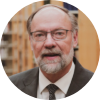
Dr. Cornelis Venema serves as the President of Mid-America Reformed Seminary and Professor of Doctrinal Studies.
Recent articles

